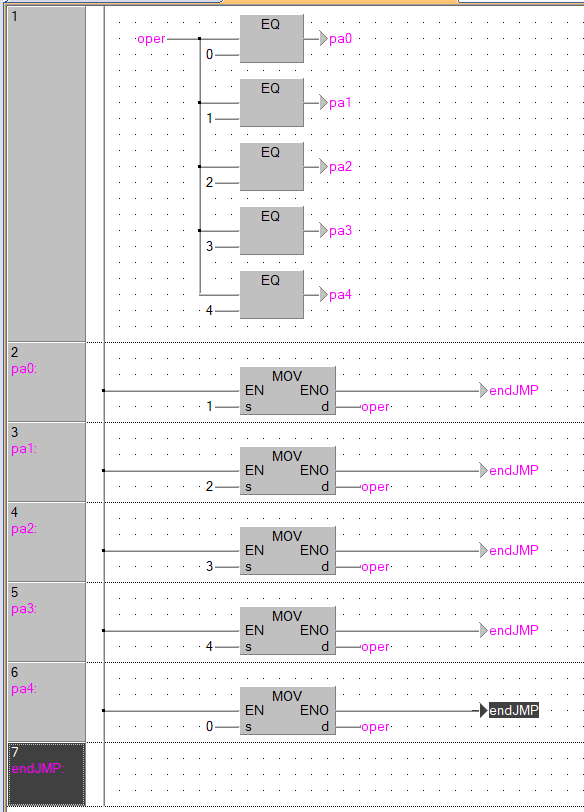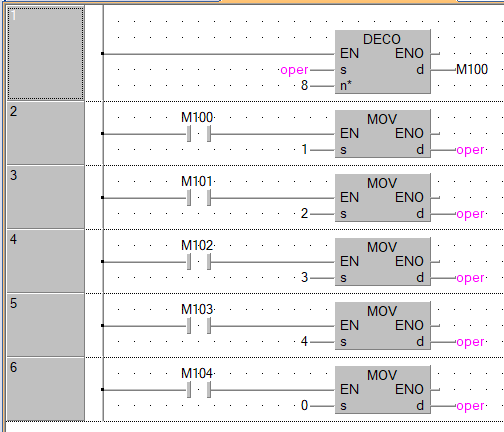Hello all,
this time is my question somehow theoretical, but with high practical impact.
Let asume we have simple program and we have to choose way of controling which step will be performed at time.
Another asumption would be, that steps are not as simple as those in attached pictures, and that there are actualy few dozens of them.
IMO deco version is much cleaner, easier to debug, and from what i have tried, it has lower step count when builded...
my question and point of debate I´ve with my colleague is: Is jump version faster (taking scan time into account) in actual real world PLC?
thank you for your insights
(It´s about Mitsu´s PLCs)


this time is my question somehow theoretical, but with high practical impact.
Let asume we have simple program and we have to choose way of controling which step will be performed at time.
Another asumption would be, that steps are not as simple as those in attached pictures, and that there are actualy few dozens of them.
IMO deco version is much cleaner, easier to debug, and from what i have tried, it has lower step count when builded...
my question and point of debate I´ve with my colleague is: Is jump version faster (taking scan time into account) in actual real world PLC?
thank you for your insights
(It´s about Mitsu´s PLCs)





